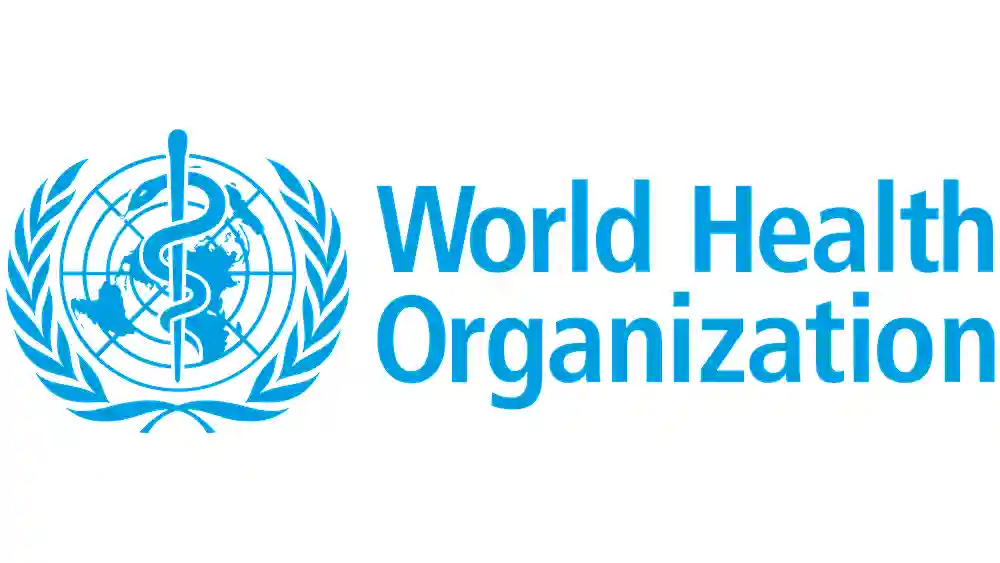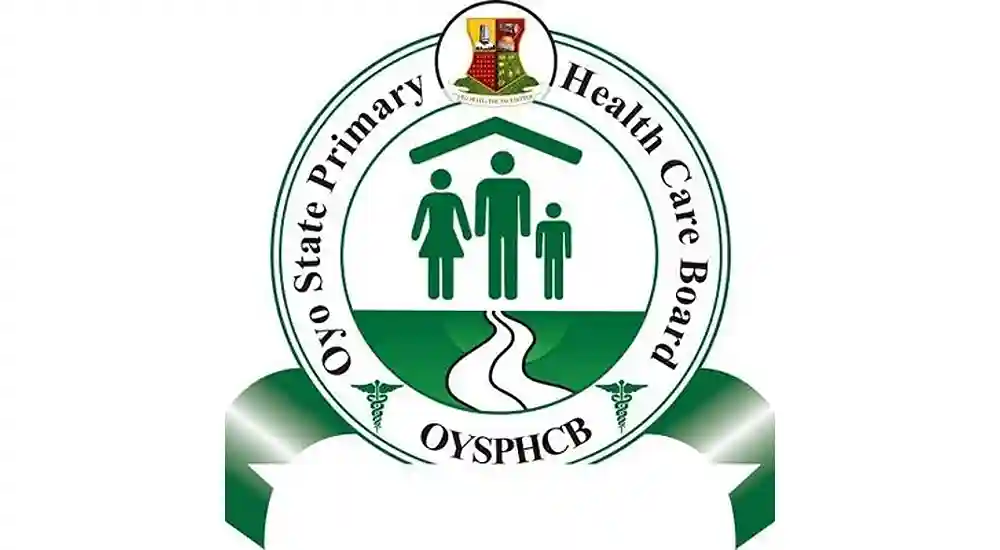Public health is the silent guardian angel of our communities, a watchful protector weaving a web of well-being around each of us.
Often misunderstood as synonymous with hospitals and doctors, public health encompasses a much broader canvas, silently safeguarding our lives at the population level.
It’s about the clean air we breathe, the safe water we drink, and the healthy choices we make every day.
Beyond treating illness, public health works tirelessly to prevent it.
It’s the scientist mapping disease outbreaks, the educator empowering communities to make informed choices, and the advocate fighting for policies that prioritize everyone’s well-being.
It’s the hand that washes, the vaccine that protects, and the voice that whispers, “You can be healthy too.”
Public health is more than just a system; it’s the unwavering belief that health is a right, not a privilege and that every life deserves a chance to flourish.
In this blog post, we will explore the multifaceted nature of public health, diving into its key areas, methodologies, and the critical role it plays in shaping the health landscape of societies.
Definition and scope of public health
Public health can be defined as the science and art of preventing disease, prolonging life, and promoting health through organized efforts and informed choices of society, organizations, public and private, communities, and individuals.
It involves a collective approach that addresses the broader determinants of health, going beyond individual clinical care to focus on population-level interventions.
Its reach extends beyond the confines of hospitals and clinics, encompassing social determinants of health, environmental factors, and economic inequalities that influence our collective health landscape.
It also champions preventive measures, including vaccination campaigns and health education programs, empowering individuals to actively participate in safeguarding their well-being.
Importantly, it addresses the social and environmental factors that can influence health outcomes, tackling inequalities and advocating for policies that prioritize health equity.
In essence, public health serves as a critical pillar of societal well-being by fostering healthy environments, equipping individuals with knowledge and tools, and proactively mitigating health risks.
The importance of public health in societies
The impact of public health, though often unseen, is undeniable.
It contributes to:
- Increased life expectancy: By effectively combating diseases and promoting healthy lifestyles, public health measures extend lives and improve overall health outcomes.
- Reduced healthcare costs: Effective prevention and public health interventions ultimately lead to reduced healthcare costs and a more efficient healthcare system.
- Stronger communities: Healthy communities are the backbone of a thriving society. Public health initiatives foster economic development, promote social cohesion and create a more resilient society.
Public health systems and organizations
Public health encompasses a vast network of systems, organizations, and personnel dedicated to protecting and promoting the health of entire populations.
This intricate web operates at various levels, from international organizations to local community health departments, all working together to address a diverse range of public health challenges.
1. Global public health governance
- World Health Organization (WHO): The WHO serves as the leading international authority on public health, setting global health priorities, coordinating international health responses, and providing technical assistance to countries.
- United Nations Children’s Fund (UNICEF): UNICEF works globally to improve the health and well-being of children, particularly in developing countries, through programs focused on immunization, nutrition, and sanitation.
2. National public health systems
Government agencies at various levels take the lead in implementing public health initiatives, setting policies, and coordinating responses.
- The Federal Ministry of Health (FMOH): oversees national health policy and programs.
- The National Agency for Food and Drug Administration and Control (NAFDAC): regulates food and drugs.
- The National Primary Health Care Development Agency (NPHCDA): manages primary healthcare services.
- Nigeria Centre for Disease Control (NCDC): Coordinates epidemic preparedness and response.
- Teaching Hospitals: Offer specialized medical care and conduct research.
3. State public health systems
- State ministries of health: Implement FMOH policies and manage state healthcare services.
- State primary health care development agencies (SPHCDAs): coordinate and implement primary healthcare activities within the state.
- State general hospitals: Offer secondary healthcare services.
- State-owned teaching hospitals: provide specialized care and conduct research.
4. Local public health systems
- Local government areas (LGAs): Manage a network of PHCs and CHOs providing basic healthcare services.
- Community health departments: These departments serve as the frontline of public health at the local level, providing essential services like immunizations, family planning, health education, and environmental health inspections.
- Primary health centers (PHCs): Offer first-line healthcare services, including vaccinations, antenatal care, and family planning.
5. Public health personnel
- Public health physicians and nurses: Medical doctors and nurses provide clinical care, conduct public health surveillance, and implement public health interventions. Nurses and midwives provide primary and secondary care, particularly in maternal and child health.
- Epidemiologists: These scientists investigate patterns and determinants of disease outbreaks and inform public health strategies.
- Environmental health specialists: These professionals assess and address environmental hazards that impact public health. They address sanitation, hygiene, and environmental hazards.
- Health educators and promoters: These individuals develop and implement educational programs to promote healthy behaviors and lifestyles.
- Researchers and scientists: Scientists in various disciplines, from public health to biology and engineering, contribute to advancements in public health knowledge and interventions.
- Community health officers and workers (CHOs and CHEWs): These frontline workers provide essential services and build trust within communities, particularly underserved ones. They deliver basic healthcare services at the community level.
- Public health specialists: are experts in epidemiology, statistics, and health promotion.
- Social workers: provide psychosocial support and address social determinants of health.
6. Academia and research institutions
Scientific research, data analysis, and technological advancements provide the foundation for evidence-based interventions and inform effective public health strategies.
- Academia: Universities and research institutions play a crucial role in public health research, training future public health professionals, and informing public health policy.
- Research institutions: Universities, research institutes, and public health schools conduct research on diseases, evaluate interventions, and provide scientific evidence for public health decision-making.
- Private sector: The private sector can contribute to public health through product development, funding research, and implementing health interventions.
7. Non-governmental organizations (NGOs)
Non-profit organizations, advocacy groups, and local initiatives play a vital role in reaching underserved populations, raising awareness, and addressing specific health needs.
- Society for Family Health (SFH): Provides reproductive health services and family planning resources.
- ActionAid Nigeria: Works to improve health and access to sanitation in rural communities.
- Pathfinder International Nigeria: promotes sexual and reproductive health rights.
- Malaria Consortium Nigeria: Implements malaria control programs.
Terminologies in public health
The terms “pillars,” “methodologies,” and “key areas” in public health can all be used to describe different aspects of the field, but they have distinct meanings and relationships.
- Pillars: These are the core principles or foundational concepts that underpin public health practice. They emphasize the “why” behind public health interventions and the core values and principles guiding the field.
- Methodologies: These are the specific approaches and tools used to investigate, analyze, and address public health issues. They focus on “how” we address public health issues and the specific tactics and tools used.
- Key areas: These are the broad thematic areas within which public health professionals work. They represent the “what” of public health, i.e., the specific health problems and populations addressed.
The pillars of public health

Public health stands as a beacon for community well-being, guided by foundational principles that form the pillars of its practice.
These principles collectively shape the landscape of public health initiatives.
They provide a framework for choosing and applying appropriate methodologies within different key areas of public health.
1. Equity
Equity is a cornerstone of public health, emphasizing the fair distribution of resources and opportunities to ensure that everyone has the chance to attain their highest level of health.
Public health interventions rooted in equity seek to address and reduce health disparities, acknowledging that different populations may face unique challenges in achieving optimal health outcomes.
2. Social justice
Social justice underscores the ethical foundation of public health, asserting that everyone deserves equal rights, opportunities, and access to resources.
Public health professionals advocate for policies and practices that promote social justice, striving to eliminate discrimination, empower marginalized communities, and create conditions that enable all to lead healthy lives.
3. Prevention
Prevention is a fundamental principle of public health that emphasizes averting health issues before they arise.
Whether through immunizations, lifestyle interventions, or policy changes, public health initiatives focus on mitigating the risk of diseases and injuries.
By prioritizing prevention, public health professionals contribute to the overall health and well-being of communities.
4. Community engagement
Community engagement recognizes the inherent power of communities to shape their own health.
Public health programs are most effective when developed in collaboration with the communities they serve.
Engaging the community ensures that interventions are culturally sensitive, responsive to local needs, and reflective of the collective voice of the people.
5. Evidence-based practice
The pillar of evidence-based practice emphasizes the use of scientific research and data to inform public health interventions.
By relying on evidence, public health professionals can identify effective strategies, assess the impact of interventions, and continuously refine practices to align with the latest scientific knowledge.
6. Human dignity
Human dignity is at the core of public health ethics, recognizing the inherent worth and value of every individual.
Public health initiatives prioritize respect for diverse perspectives, cultures, and identities, fostering a sense of inclusivity and dignity in all interactions and interventions.
7. Social responsibility
Social responsibility underscores the shared commitment to the well-being of society as a whole.
Public health professionals, policymakers, and communities work together to address health challenges, recognizing that individual actions collectively contribute to the broader health of the population.
8. Sustainability
Sustainability in public health involves recognizing the interconnectedness of environmental, social, and economic factors in health outcomes.
Public health initiatives seek to balance the present needs of communities with the long-term impact on the environment and future generations, promoting practices that foster resilience and ecological balance.
9. Accountability
Accountability is a guiding principle that emphasizes transparency, responsibility, and responsiveness in public health actions.
Public health professionals and institutions are accountable to the communities they serve, ensuring that interventions are effective, ethical, and aligned with the best interests of the public.
Public health methodologies
Public health methodologies form the backbone of systematic approaches aimed at preserving, protecting, and promoting the health of populations.
A diverse array of methodologies is employed to understand, assess, and address health challenges.
These methodologies are used to implement the pillars of public health within the key areas of public health.
1. Epidemiology
Epidemiology, often referred to as the cornerstone of public health, is the study of the distribution and determinants of diseases within populations.
Epidemiologists utilize observational and analytical methods to identify patterns, risk factors, and causative factors of diseases.
By analyzing the occurrence of health events, epidemiology provides critical insights that guide public health interventions, policy development, and resource allocation.
2. Biostatistics
Biostatistics plays a pivotal role in public health research by applying statistical methods to analyze and interpret health-related data.
From study design to data collection and analysis, biostatisticians contribute quantitative rigor to research endeavors.
Their work aids in drawing valid conclusions, identifying trends, and assessing the effectiveness of public health interventions.
3. Environmental health research
Environmental health focuses on understanding the impact of the environment on human health.
Methodologies in this area involve assessing and managing environmental factors that may pose risks to communities.
Monitoring air and water quality, conducting risk assessments, and implementing interventions to reduce environmental hazards are key components of environmental health methodologies.
4. Health policy and management
Public health policy and management methodologies center on the development, implementation, and evaluation of policies and programs designed to improve health outcomes.
Strategic planning, resource allocation, and effective leadership are essential to navigate the complexities of healthcare delivery and ensure the success of public health initiatives.
5. Social and behavioral sciences
Understanding the social and behavioral determinants of health is critical for designing effective interventions.
Social and behavioral sciences methodologies involve qualitative and quantitative research approaches to explore how societal, cultural, and psychological factors influence health behaviors.
This knowledge informs the development of health promotion campaigns and behavior change interventions.
6. Global health
Global health methodologies extend public health principles to address health challenges on a global scale.
This involves collaborative efforts, international partnerships, and cross-cultural approaches to combat infectious diseases, improve healthcare infrastructure, and tackle health disparities worldwide.
7. Research and evaluation
Research is a driving force behind evidence-based public health practices.
Research methodologies, including randomized controlled trials, observational studies, and systematic reviews, provide the evidence base for public health interventions.
Evaluation methodologies assess the impact, effectiveness, and efficiency of programs, guiding evidence-based decision-making.
Conducting studies, clinical trials, and evaluations helps identify effective interventions, assess program outcomes, and contribute to the continuous improvement of public health strategies.
8. Health promotion and education
Empowering individuals and communities through health promotion and education is a fundamental strategy in public health.
This includes campaigns, educational programs, and community outreach initiatives aimed at fostering health literacy and encouraging preventive behaviors.
Utilizing communication strategies, community engagement, and educational campaigns, health promotion methodologies aim to empower individuals and communities to adopt healthy behaviors.
This includes promoting preventive measures, lifestyle changes, and fostering health literacy.
9. Disease surveillance
Disease surveillance involves systematically monitoring, collecting, analyzing, interpreting, and disseminating health data to guide public health action.
Monitoring and tracking the occurrence of diseases within populations is essential for early detection and response.
Surveillance systems enable public health professionals to identify trends, allocate resources effectively, and implement timely interventions.
10. Vaccination programs
Immunization is a cornerstone of disease prevention.
Public health organizations design and implement vaccination programs to protect populations against infectious diseases, contributing to the establishment of herd immunity.
Immunization strategies involve comprehensive planning, distribution, and monitoring to achieve high vaccination coverage.
11. Policy development and advocacy
Public health professionals engage in policy development and advocacy to influence legislation and regulations that impact health outcomes.
This includes advocating for smoke-free policies, nutritional guidelines, and other measures that promote community well-being.
Evidence-based recommendations, stakeholder engagement, and effective communication contribute to the development and implementation of impactful policies.
Key areas of public health
Public health encompasses a wide array of key areas, each crucial for the well-being of communities and populations.
These are the broad thematic areas within which public health professionals work.
These key areas guide the selection of relevant methodologies and ultimately contribute to upholding the pillars of public health.
1. Chronic medical conditions
Chronic diseases, such as cardiovascular diseases, diabetes, and certain cancers, represent a significant public health challenge globally.
Public health initiatives in this area focus on prevention, early detection, and management of chronic conditions.
Lifestyle interventions, awareness campaigns, and access to healthcare services play critical roles in mitigating the impact of chronic diseases on population health.
2. Communicable diseases
The control and prevention of communicable diseases remain fundamental to public health efforts.
Vaccination programs, disease surveillance, and outbreak response strategies are key components.
With the global threat of emerging infectious diseases, as seen with the COVID-19 pandemic, effective public health measures are essential for minimizing the spread and impact of communicable diseases.
3. Maternal and child health
Ensuring the health and well-being of mothers and children is a cornerstone of public health.
Maternal and child health initiatives encompass prenatal care, safe childbirth practices, neonatal care, and early childhood development.
These efforts aim to reduce maternal and infant mortality rates, fostering a healthy start for the next generation.
4. Environmental health
The connection between the environment and public health is undeniable.
Environmental health initiatives address issues such as air and water quality, sanitation, and occupational hazards.
By mitigating environmental risks, public health professionals strive to create conditions that promote health and prevent diseases linked to their surroundings.
5. Injury prevention
Injury prevention is a key area focusing on reducing the incidence of accidents and intentional harm.
This includes strategies to prevent road traffic injuries, workplace accidents, and violence.
Public health efforts in injury prevention encompass education, legislation, and community-based interventions to create safer environments.
6. Mental health
Mental health has gained prominence as a critical public health concern.
Initiatives in this area aim to raise awareness, reduce stigma, and improve access to mental health services.
Promoting mental well-being and addressing the factors contributing to mental health disorders are essential components of comprehensive public health strategies.
7. Nutrition and physical activity
Nutrition and physical activity play a vital role in overall health and disease prevention.
Public health interventions target healthy eating habits, physical activity promotion, and obesity prevention.
These initiatives aim to reduce the burden of nutrition-related diseases and enhance the overall health of populations.
8. Substance abuse prevention
Substance abuse prevention is a critical component of public health, addressing the impact of alcohol, tobacco, and illicit drug use on individuals and communities.
Public health strategies include education, treatment programs, and policies aimed at reducing the prevalence of substance abuse disorders.
Public health challenges
While public health has achieved remarkable successes, it faces ongoing challenges.
Addressing these challenges requires continued innovation, collaboration, and a commitment to the principles of public health.
- Technological advancements: Big data, artificial intelligence, and digital health tools hold immense potential for disease surveillance, personalized interventions, and improved communication.
- Global collaboration: Addressing global health threats like pandemics requires coordinated efforts across borders, necessitating robust international partnerships and information sharing.
- Community engagement: Empowering communities and fostering grassroots initiatives can ensure sustainable solutions and effective interventions tailored to specific needs.
Emerging trends in public health

Public health is constantly evolving to meet the challenges of a changing world.
As we move into the future, several exciting trends are poised to revolutionize the way we protect and promote health for all.
Let’s delve into some of the most transformative forces shaping the future of public health
1. Digital health and technology integration
One of the most prominent emerging trends in public health is the integration of digital health technologies.
The widespread use of smartphones, wearables, and health apps allows individuals to monitor their health in real time.
Telehealth and telemedicine have gained momentum, enabling remote consultations, monitoring chronic conditions, and expanding access to healthcare services, particularly in underserved areas.
2. Precision public health
Precision or personalized public health adopts a personalized approach to disease prevention and intervention.
Leveraging advancements in genomics, data analytics, and epidemiology, public health professionals can identify individual-level risk factors, tailor interventions, and implement targeted strategies for specific populations.
This approach allows for more efficient resource allocation and a more nuanced understanding of health disparities.
3. Social determinants of health
Recognition of the impact of social determinants on health outcomes is gaining prominence.
Public health efforts now focus on addressing factors such as income inequality, education, housing, and access to nutritious food.
By targeting these determinants, interventions aim to create more equitable conditions that positively influence health outcomes.
4. Climate change and environmental health
The intersection of climate change and public health is a growing concern.
Rising temperatures, extreme weather events, and environmental degradation contribute to the spread of infectious diseases, worsen air quality, and pose significant health risks.
Public health initiatives increasingly emphasize climate resilience, sustainable practices, and strategies to mitigate the health impacts of environmental changes.
5. Mental health advocacy
Mental health is gaining prominence as a critical public health issue.
With growing awareness of the prevalence of mental health disorders, public health professionals are advocating for increased access to mental health services, the destigmatization of mental illnesses, and the integration of mental health considerations into overall health policies and programs.
6. Global health security
The COVID-19 pandemic has highlighted the importance of global health security.
Emerging infectious diseases pose significant threats to global well-being, necessitating international collaboration, early detection systems, and coordinated responses.
Public health efforts are increasingly focused on strengthening global health infrastructure and preparedness for future pandemics.
7. Artificial intelligence and big data
The integration of artificial intelligence (AI) and big data analytics is transforming public health research and interventions.
Machine learning algorithms can analyze vast datasets to identify patterns, predict disease outbreaks, and inform targeted interventions.
These technologies enhance the efficiency and accuracy of public health decision-making.
8. Community-based participatory research
An emerging trend emphasizes community engagement in public health research and interventions.
Community-based participatory research involves collaboration between researchers and community members, ensuring that interventions are culturally sensitive and relevant and address the unique needs of diverse populations.
This approach enhances the effectiveness and sustainability of public health initiatives.
9. One health approach
Traditionally, human health, animal health, and environmental health have been treated as separate entities.
However, the One Health approach recognizes that diseases can spill over from animals to humans and vice versa, and that environmental factors impact both.
This collaborative approach promotes integrated surveillance, prevention, and control strategies across sectors, leading to a more comprehensive understanding and response to emerging health threats.
Embracing the public health mindset
Public health is not merely the domain of professionals; it’s a shared responsibility.
We all play a role in shaping the health of our communities.
By adopting a public health mindset, we can all contribute to a healthier world.
- Practice preventative measures: From vaccinations to healthy eating and regular exercise, individual actions ripple outward, promoting community well-being.
- Advocate for public health initiatives: Support policies that prioritize health equity, funding for public health programs, and access to quality healthcare for all.
- Stay informed: knowledge is power. Stay updated on public health issues, learn about emerging threats, and share reliable information with others.
By practicing healthy habits, advocating for equitable healthcare access, and supporting public health initiatives, we become active members of this movement, contributing to a world where well-being thrives.
Damola Obisesan
Damola is a medical doctor who has worked in the Nigerian healthcare industry for a little over 3 years in a number of primary, secondary, and tertiary hospitals. He is interested in and writes about how technology is helping to shape the healthcare industry. He graduated from the College of Medicine, University of Ibadan, the foremost medical training institution in Nigeria.










